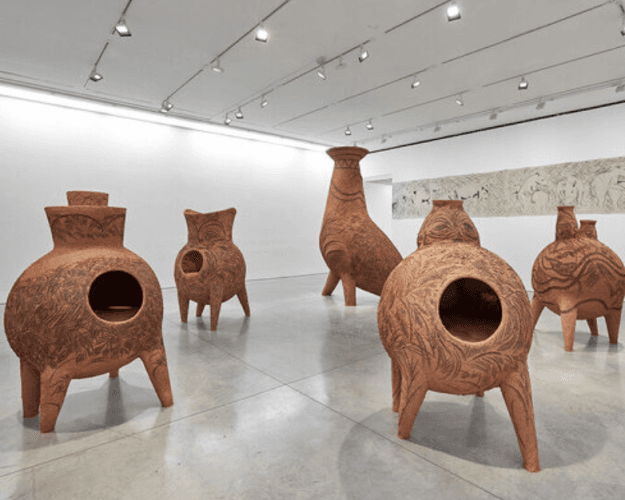SEARCH
MORE BLOGS
Kodak’s miniature keychain digital ‘charmera’ brings back retro point-and-shoot photography
21 Sep, 2025
Sasquatch 617: a panoramic film camera that captures wide, uninterrupted landscapes
21 Sep, 2025
lkajsdfll;zsdf
28 Apr, 2025
The Ultimate Guide to Fashion: Clothing Trends and Styling Tips for Every Season
21 Sep, 2025

22Sep, 2025
Admin
Massive adobe ovens by artist gabriel chaile march across marianne boesky's NYC gallery art
Marianne Boesky Gallery in Chelsea presents Esto es América, o qual é o limite?, the debut New York solo exhibition by Argentinian artist Gabriel Chaile. Currently on view through October 18th, 2025, the show brings together adobe sculptures, drawings, and photographs that combine ancestral forms with contemporary political imagery.
The five sculptural works at the center of the exhibition extend Chaile’s long-standing interest in the genealogy of form — his term for the ways shapes and motifs recur across cultures and time. The clay structures resemble bread ovens and animal figures, their surfaces marked with dense black line drawings. ‘Each sculpture is covered in black line drawings,’ the artist explains. ‘Within those lines, other hidden drawings emerge — like walking through a jungle, where you’re present, yet not always visible.’
Artist Gabriel Chaile arranges the works in motion, as though marching across the gallery floor in procession. The largest piece suggests the body of a lizard or bird, captured mid-transformation. Surrounding it, four oven-like volumes evoke both domestic use and anthropomorphic presence. Together they form what the artist describes as ‘a walk, a march, or a protest.’
Along the walls, large photographic prints document a protest Chaile witnessed in Montana during a residency in the United States. Elderly people, children, and young adults gathered quietly with ambiguous signs. ‘What struck me was the manner of protest: people standing quietly on sidewalks,’ he recalls. ‘Watching from the car, I felt a kind of alignment — not necessarily with the political opposition, but with the deeper message: a call for a more inclusive coexistence.’

21Sep, 2025
Admin
Wooden furniture pieces, banca tres and silla cuatro, interact with space, materiality, and light
In southern Mexico City, within a double-height concrete house designed by OW Arquitectos, two furniture pieces by Omar Wade, Banca Tres (Bench Three) and Silla Cuatro (Chair Four), investigate the relationship between space, materiality, and light. The residence, characterized by skylights and large windows, provides the setting for this dialogue, framing the interaction of furniture and architecture.
Together, the two wooden pieces present an exploration of scale and construction. Rather than functioning as static objects, they actively engage their surroundings, responding to light, spatial context, and the passage of time.
Banca Tres combines wood craftsmanship with living elements. Constructed from tzalam wood (120 × 40 × 44 cm), its surface incorporates a circular opening (18 cm in diameter, 25 cm deep) designed to hold a clay planter (17 × 55 cm). The integrated planting element transforms the bench into an evolving object that changes over time, linking furniture with natural growth.
Chair Four, influenced by the Oaxacan coast, employs parota wood sourced from the region. OW arquitectos’ designer Omar Wade conceives the chair as a precise cube (60 × 60 × 60 cm). Its seat and backrest are formed from 3 mm-thick steel sheets with narrow side flanges, joined to wooden legs with stainless steel bolts. The result is a composition that balances rigidity with a degree of visual permeability.